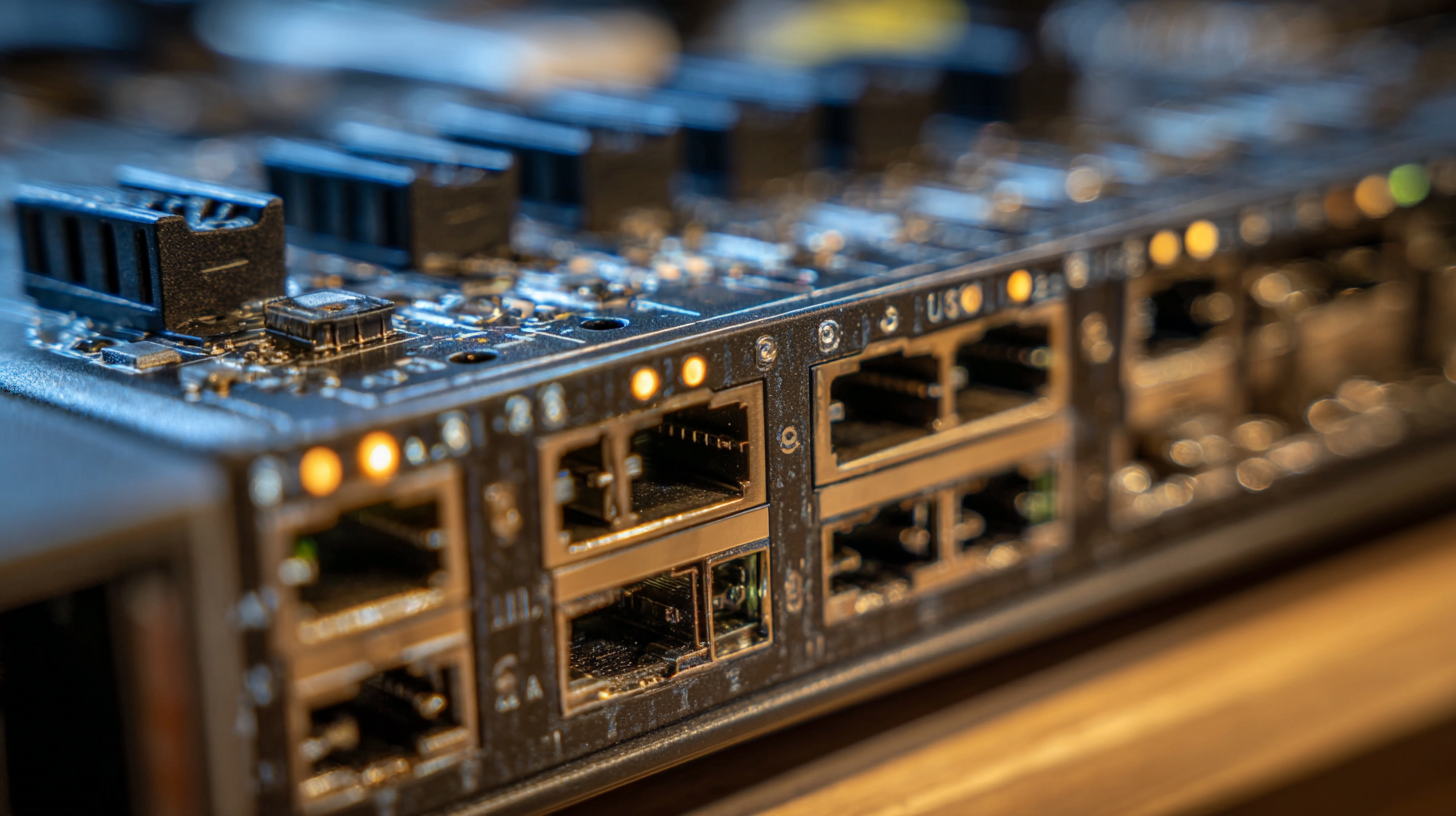SUNDI TOOLS
- Copyright © Wuxi Sundi Precision Tools Co.,LTD All rights reserved.
- Site Map
In today's digital ecosystem, where data traffic is soaring by over 40% annually, enhancing network performance has become a paramount concern for organizations worldwide. The implementation of Router Blade technology is revolutionizing how businesses manage their network infrastructure. According to the latest report from Gartner, organizations utilizing advanced routing technologies can achieve up to 30% lower operational costs and significantly improve data throughput.
 Router Blades, as modular components, provide the flexibility and scalability necessary to adapt to evolving business needs and growing bandwidth demands. This guide will delve into the mechanics of Router Blade technology, exploring its advantages, best practices for integration, and the potential it holds for optimizing network efficiency.
Router Blades, as modular components, provide the flexibility and scalability necessary to adapt to evolving business needs and growing bandwidth demands. This guide will delve into the mechanics of Router Blade technology, exploring its advantages, best practices for integration, and the potential it holds for optimizing network efficiency.
By harnessing these powerful tools, companies can not only enhance their performance but also ensure a seamless user experience in an increasingly connected world.
Router blade technology plays a crucial role in enhancing network performance through key components and functionality designed for efficiency and scalability. At its core, a router blade integrates essential components such as processors, memory, and network interfaces, which together determine the router's throughput and ability to handle increasingly complex network traffic. As digital environments evolve, the demand for high-performance routers that can support advanced applications and higher data rates becomes more critical. Router blades are modular, allowing for easy upgrades and customization based on specific network requirements, which is essential in today’s fast-paced technological landscape.
In light of recent developments in the IT sector, including new regulations enhancing cybersecurity in countries like Germany, the importance of robust router technology cannot be overstated. Advanced router blades can offer improved security features and seamless integration with existing infrastructure, thus ensuring compliance with stringent regulations. The evolution of router components, however, has raised concerns about product quality, as seen in recent discussions about certain brands reducing the specifications of their router models. It is essential for consumers and enterprises alike to understand the implications of these changes on performance and reliability, particularly as networking conditions become increasingly demanding in the age of IoT and cloud services.
Optimizing network performance through router blade technology necessitates a thorough understanding of configuration strategies. Router blades, which operate as modular components within a router, allow for scalable and efficient network management. One essential strategy for maximizing their efficiency is to align traffic loads with blade capabilities. By distributing workloads evenly across multiple blades, network bottlenecks can be minimized, leading to improved overall throughput.
Additionally, implementing Quality of Service (QoS) protocols is crucial when configuring router blades. By prioritizing certain types of traffic, such as voice or video, organizations can ensure that critical applications receive the necessary bandwidth, reducing latency and enhancing user experience. Regular monitoring and adjustment of these settings in response to network changes can further optimize performance. Leveraging these strategies not only enhances the functionality of router blades but also provides a robust framework for maintaining network efficiency in an increasingly data-driven environment.
| Router Blade Model | Maximum Throughput (Gbps) | Supported Protocols | Power Consumption (Watts) | Form Factor |
|---|---|---|---|---|
| Model A | 40 | IPv4, IPv6, MPLS | 150 | Blade Slot |
| Model B | 80 | BGP, OSPF, IS-IS | 200 | 2U |
| Model C | 100 | MPLS, VPN, QoS | 250 | Half-width |
| Model D | 120 | Ethernet, IPv4, IPv6 | 300 | Full-width |
| Model E | 160 | Frame Relay, ATM, BGP | 350 | Compact |
The global market size for critical infrastructure protection has witnessed substantial growth, expanding from $9.63 billion in 2019 to a projected $15.46 billion by 2027, with a compound annual growth rate (CAGR) of 6.2%. This trend highlights the increasing focus on security measures essential to safeguard network infrastructures against evolving threats. Adopting best practices is paramount for organizations looking to enhance their security posture, especially in cloud environments. The National Security Agency (NSA) has released the top ten security strategies for cloud applications, emphasizing the need for rigorous protocols.
Tips for improving your network security include regularly updating your security software and performing routine audits to identify vulnerabilities. Additionally, organizations are encouraged to implement Artificial Intelligence (AI) security measures, which automate threat detection and response, leading to a more proactive security strategy. The collaboration among international cybersecurity agencies has resulted in guidelines to secure AI data, ensuring authenticity through unique identifiers. In a landscape where cyber threats continue to evolve, being proactive and vigilant is essential for effective network protection.
This chart displays the impact of router blade technology on various performance metrics, focusing on throughput, latency, and packet loss.
 Monitoring the performance of router blade technology is essential for maintaining optimal network efficiency. Various tools and techniques can assist network administrators in assessing the effectiveness of these advanced routing systems. One primary method involves utilizing performance monitoring software, which provides real-time analytics on traffic flow, latency, and packet loss. This software enables IT teams to identify bottlenecks and troubleshoot issues promptly, ensuring that the network remains responsive and reliable.
Monitoring the performance of router blade technology is essential for maintaining optimal network efficiency. Various tools and techniques can assist network administrators in assessing the effectiveness of these advanced routing systems. One primary method involves utilizing performance monitoring software, which provides real-time analytics on traffic flow, latency, and packet loss. This software enables IT teams to identify bottlenecks and troubleshoot issues promptly, ensuring that the network remains responsive and reliable.
Additionally, employing network management protocols, such as SNMP (Simple Network Management Protocol), allows for comprehensive monitoring of router blades. By configuring SNMP agents on router blades, administrators can collect data on system performance metrics, including CPU usage and memory consumption. Regular reporting and analysis of this data can illuminate trends over time, guiding capacity planning and resource allocation decisions. Leveraging these performance monitoring techniques ensures that router blades operate at peak efficiency, ultimately enhancing overall network performance.
Advancements in router blade technology are set to redefine networking, offering unparalleled efficiency and performance. As organizations continue to demand faster data processing and seamless connectivity, innovations such as modular design, enhanced processing power, and integration of AI capabilities are emerging as key trends.
 Modular router blades, which allow for easy upgrades and scalability, empower businesses to adapt to changing network demands without overhauling their entire infrastructure. This flexibility is crucial in an era where data traffic is continuously on the rise.
Modular router blades, which allow for easy upgrades and scalability, empower businesses to adapt to changing network demands without overhauling their entire infrastructure. This flexibility is crucial in an era where data traffic is continuously on the rise.
Moreover, the incorporation of artificial intelligence is revolutionizing how traffic management is approached.
AI-driven router blades can analyze and optimize network performance in real-time, identifying bottlenecks and predicting traffic patterns. This not only enhances overall efficiency of the network but also improves reliability and uptime. As these sophisticated technologies evolve, they will play a pivotal role in shaping future networking landscapes, ultimately leading to smarter, more responsive, and robust network infrastructures capable of handling the complexities of tomorrow's digital environment.





